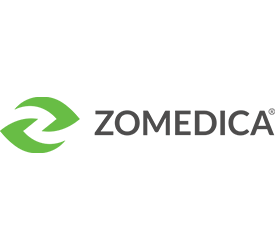Feline Hyperadrenocorticism/Hypercortisolism
Hyperadrenocorticism (HAC), also referred to as hypercortisolism or Cushing’s syndrome, is an infrequent diagnosis of cats. Similar to dogs, cats usually have pituitary-dependent HAC, and the hormonal mechanism of action is the same as in dogs. Clinical signs are due to the excess circulating glucocorticoid levels. Cats seem to be rarely negatively affected by chronic use of exogenous glucocorticoids, so the incidence of iatrogenic Cushing’s syndrome in cats is much less frequent compared with dogs.84
HAC usually affects middle-aged to older cats, with the majority having concurrent diabetes mellitus that may be considered difficult to regulate. It is important to note that most difficult diabetic cases do not have HAC, and other causes of poor diabetic regulation should be pursued first. Clinical signs of HAC in cats are often nonspecific and include weakness, abdominal distension, and dermatological issues such as fragile skin and failure to regrow hair. Cats with concurrent diabetes mellitus are usually polyuric, polydipsic, and polyphagic, but these signs reflect persistent hyperglycemia rather than CS per se. Weight loss, lethargy, and gastrointestinal signs are possible but uncommon.
A minimum database will most commonly show hyperglycemia and glucosuria. Changes that are common in canine HAC are not as predictable in feline patients. Alkaline phosphatase levels are usually normal in cats who lack the steroid-induced isoenzyme, and hypercholesterolemia may be present. A stress leukogram is present in only half of feline cases. Definitive diagnosis in cats may be challenging, with the most reliable diagnosis coming from the LDDST. It is important to note that dexamethasone dosing for cats is greater than the effective canine dose. Cats must be dosed at 0.1 mg/kg dexamethasone IV.82 The interpretative criteria are similar to those used in dogs, with a lack of suppression at 4 or 8 hr after administration confirming the diagnosis of HAC. UCCR testing may also be used for initial screening. At least two morning samples should be collected at home by the owner and submitted for evaluation.85 A positive result from UCCR testing should be followed up with an LDDST, but a negative result likely rules out the diagnosis of HAC. An ACTH stimulation test is not recommended as a diagnostic tool in cats because of its poor sensitivity to detect feline HAC compared with the other available testing.85
Differentiation testing to determine if the HAC is caused by a pituitary tumor or adrenal tumor can be considered, as adrenalectomy may be curative in cats with unilateral adrenal tumors. Radiation therapy may be beneficial in cats with PDH.
Medical treatment with trilostane is the mainstay of HAC treatment in cats, with a recommended dosing of ~1 mg/kg given two to three times daily with food.83 The licensed product may be reformulated if doses significantly less than 5 mg per dose are needed. The goal of treatment for feline HAC is control of clinical signs, and strict monitoring of cortisol levels may not be critical for treatment success. Improvement of weight, polyuria/polydipsia, polyphagia, and overall quality of life are the primary treatment goals. Laboratory monitoring with CBC, biochemical profiles, and urinalysis 7–14 days after starting trilostane and every 3–4 mo thereafter is recommended. If cortisol monitoring is pursued, the UCCR testing and ACTH stimulation test have been most commonly used to ensure trilostane is not leading to hypocortisolism. Final decisions on dosing, however, should be based on clinical assessment of the cat by both the veterinarian and the owner, the status of any concurrent disease, and the prevention of hypocortisolism.
Clinical Tips
- Poorly regulated diabetes in cats usually has an etiology other than HAC.
- Compared with the canine dose for LDDST, a higher dexamethasone dose is needed in cats: 0.1 mg/kg of dexamethasone is consistently effective in suppressing healthy cats but not cats with HAC.86
- Three-times-a-day dosing of trilostane may be needed to reach therapeutic doses with standard capsule sizes.
- Reformulation of the licensed product may be required for smaller doses.
- Clinical evaluation of the cat and any concurrent diseases may be more important than targeted monitoring of adrenal function.








